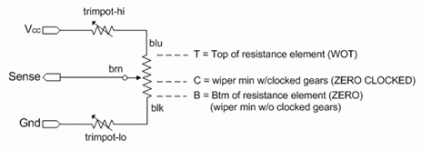drewjet
10 kW
Looking Great!

fechter said:I would think the switch would be wired separately from the pot to operate a contactor.

larsb said:I measured the throttle:
- Switch is not connected to throttle signal circuit (great!)
- Low resistance (with wiper closest to the measured contact) is about 20ohm on one side and 40ohm on the other.
- max resistance end to end is 5.5kOhm
If i put 1 kOhm resistor on both in in and out then signal span would become 0,7-4,3V, that should do it.
Thanks guys!

larsb said:I guess that current spikes push controller into high current error but i cannot be sure.
larsb said:I will remove the high volt control also if current spikes could drive a high volt error.. It'll be interesting to see if it makes any difference
EDIT: I removed the low and high volt control, still there are cutouts.. could also be BMS on the old battery pack that trips at high current
